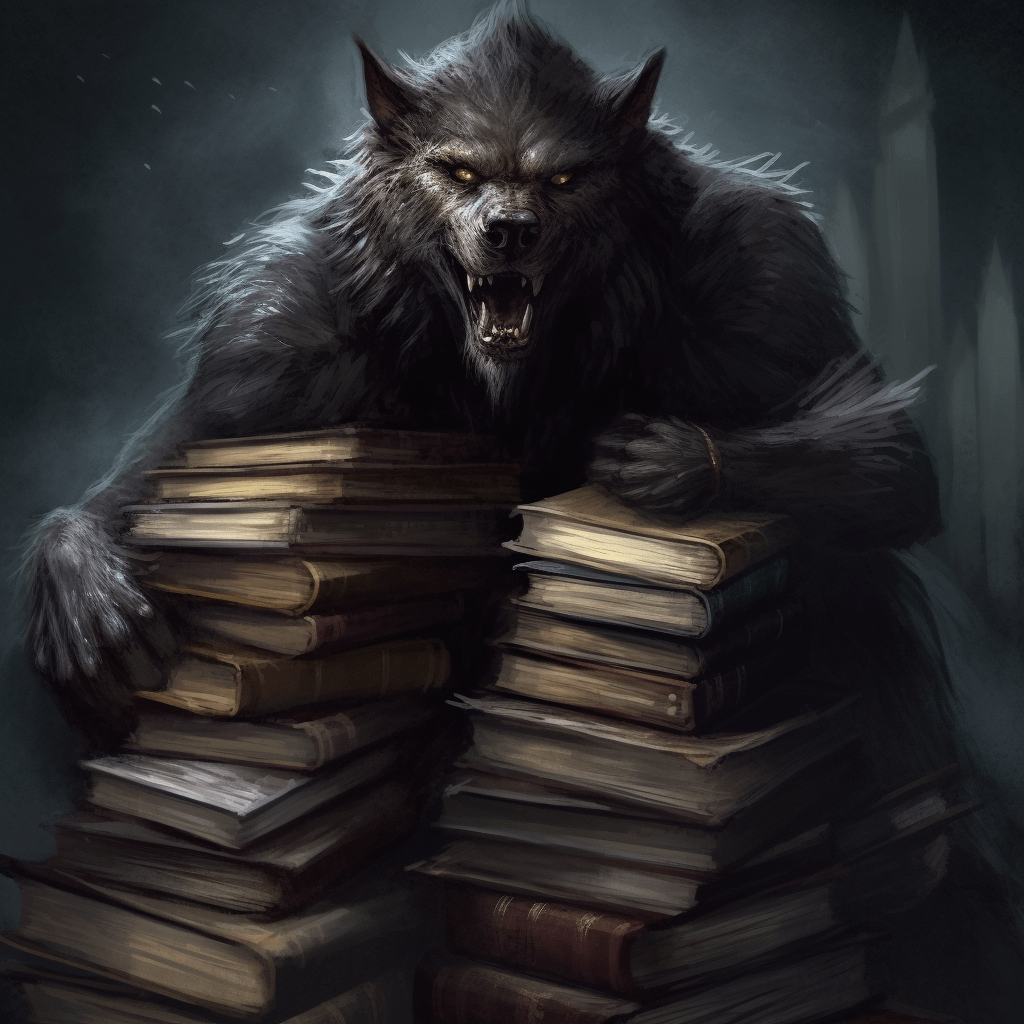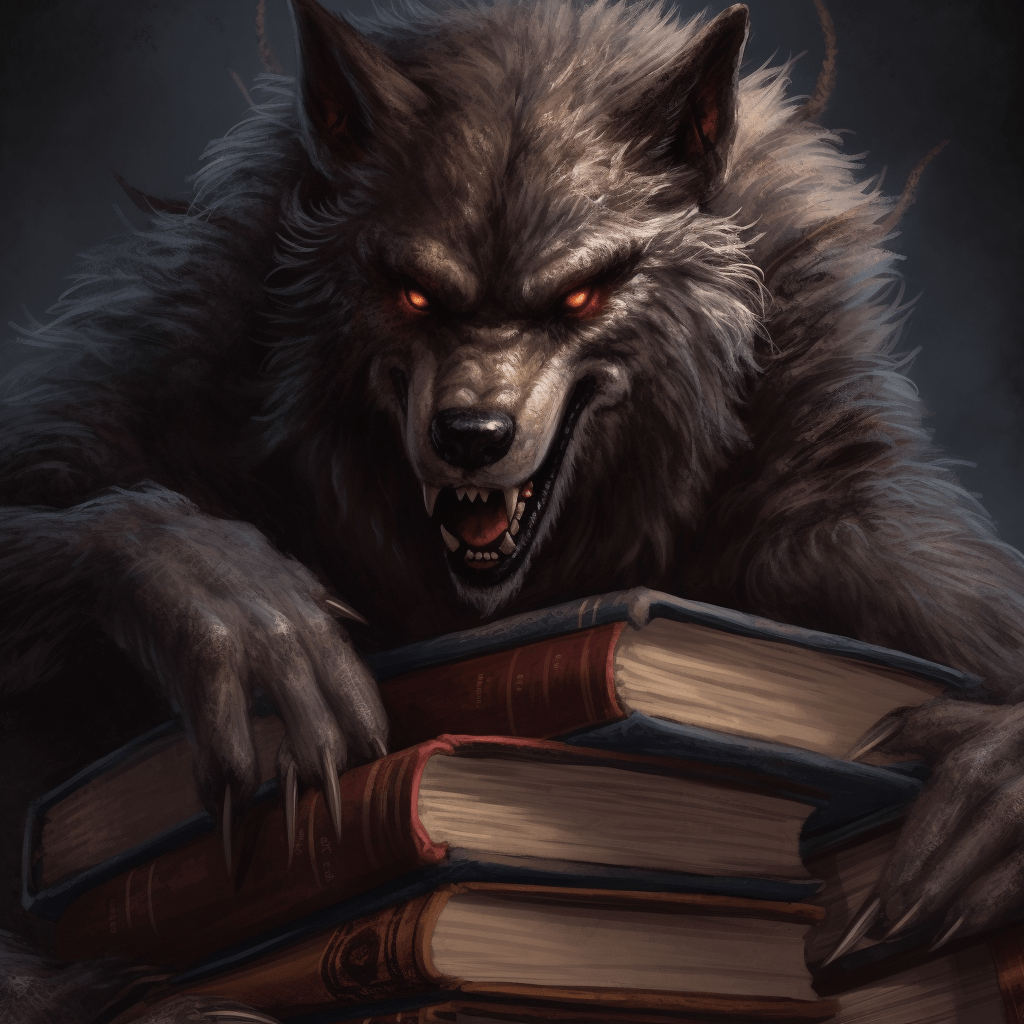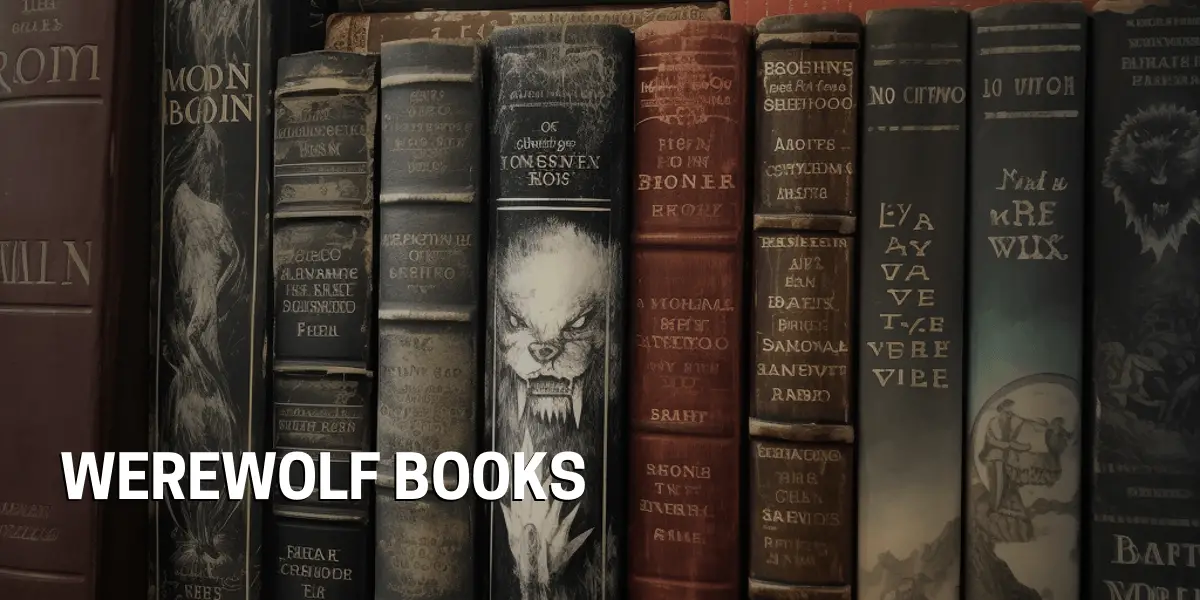Books about Werewolves
We all know the stories of werewolves: mysterious creatures of the night, often seen as monstrous beasts that terrorize the living. But what lies beneath these stories? Books about werewolves explore the concept of werewolves, their origins, and how their mythos has been passed down over time. These kinds of books typically delve into the various aspects of werewolf lore, such as their abilities, habits, and weaknesses.
Recent werewolf books often explore the idea of werewolves as more than just monsters, often presenting them as misunderstood creatures of the night. With this in mind, werewolf books can provide an interesting exploration of the legends of the supernatural.

What genres of books are available that feature werewolves?
Werewolf novels have become increasingly popular in recent years, and there is a wide variety of books available for readers of all ages. Werewolf fiction can be found in a variety of genres, from fantasy and horror to paranormal romance and young adult fiction.
The popularity of werewolf fiction has grown exponentially over the past few decades, thanks in part to the success of best-selling authors such as Stephen King, Anne Rice, and Laurell K Hamilton. With so many options available, it’s never been easier to find a werewolf story that appeals to any reader.
Are there any books about werewolves suitable for children?
How can children explore the world of werewolves without reading stories that are too mature for their age? Fortunately, there is a growing selection of werewolf books suitable for young readers. These books often feature exciting adventures, thrilling mysteries, and themes of friendship and courage. Popular titles such as Werewolf Academy and Howl of the Wolf are both age-appropriate and fun.
Examining the age-appropriateness of these books is essential for parents and teachers when selecting reading materials for children. Finding books that feature werewolves is also important for young readers, as it helps them understand the nuances of the werewolf mythos and gain insight into the minds of these creatures.
How has the literature surrounding werewolves evolved over time? While there is no comprehensive literature written by authors who identify as werewolves, there are some authors who have written books about werewolf culture. Stephen Graham Jones, a horror and science fiction author, has written a number of books about werewolves, including The Last Final Girl and Mongrels.
Other authors who have written books about werewolf culture include Hal Duncan, who wrote Vella, and Leigh Bardugo, who wrote Shadow and Bone. All of these authors have provided interesting insights into the culture of werewolves, exploring different aspects of their mythology and history.
Are there any books that provide information about the history of werewolves?
How has the literature surrounding werewolves evolved over time? From Stephen Graham Jones’ The Last Final Girl to Hal Duncan’s Vella, these books provide a detailed look into the world of werewolves and the cultural and religious implications of their existence. With these books, readers can gain a deeper understanding of werewolf culture and its impact on our world. Werewolves have been a part of folklore and literature for centuries, and these books provide an interesting look into how their stories have changed over time. By exploring these stories, readers can gain a greater understanding of the cultural and religious implications of werewolves and their impact on society.
Is there any fiction that centers around werewolves as the main characters?
We have all heard of the classic horror genre and its iconic creatures, such as vampires and werewolves. But did you know that there are many books out there that feature werewolves as the main characters? From the Twilight Saga by Stephanie Meyer to Red Moon by Benjamin Percy and Wolf Brother by Michelle Paver, fantasy and horror readers alike have a variety of stories to choose from. Other books featuring werewolves include The Werewolf of Fever Swamp by R.L. Stine, The Wolf Road by Beth Lewis, and The Witch’s Boy by Kelly Barnhill. With these books, readers can gain a deeper understanding of werewolf culture and its impact on our world.Are there any books about werewolves that feature characters of color?
How many books about werewolves feature characters of color? In recent years, this question has become increasingly important for readers of all backgrounds. While the classic werewolf stories tend to feature white protagonists, there is an increasing number of books that portray characters of color as werewolves. From the Twilight Saga by Stephanie Meyer to Red Moon by Benjamin Percy and Wolf Brother by Michelle Paver, readers are presented with a variety of stories that include characters from diverse backgrounds.
These books provide an opportunity for readers to explore werewolf culture and its impact on our world. They also allow readers to gain a deeper understanding of how issues of cultural identity and diversity are represented in literature. By featuring characters of color, these stories can help to illustrate the varied experiences of people of color.
Furthermore, these books can have a profound impact on readers of color, offering them a chance to explore their own identity and find a sense of belonging in the fantasy and horror genres. By connecting with characters of color in these books, readers can gain a sense of understanding and acceptance that may not be found in other sources of entertainment.
Are there any books about werewolves that include illustrations?
When it comes to werewolf-themed books, illustrations are often used to bring the story to life. With fantastical elements such as transformations, it is often difficult to capture these events with just words alone. Examples of such works include The Werewolf of Fever Swamp by R.L. Stine, Wolf Brother by Michelle Paver, and The Silver Wolf by Alice Borchardt. All of these books utilize illustrations to depict the transformation of humans into werewolves, as well as other supernatural elements, such as magical creatures and objects. By making use of illustrations, these books can create a more immersive and engaging experience for readers.
In addition, illustrations can be used to explore the complexities of werewolf culture and identity. By using illustrations, authors can explore these complexities in a way that is not possible with words alone. This allows readers to gain a deeper understanding of werewolf culture, and how issues of cultural identity and diversity are represented in literature.
Overall, illustrations are an effective way to bring werewolf stories to life. By making use of illustrations, authors can create a more immersive and engaging experience for readers, while also exploring the complexities of werewolf culture and identity.

